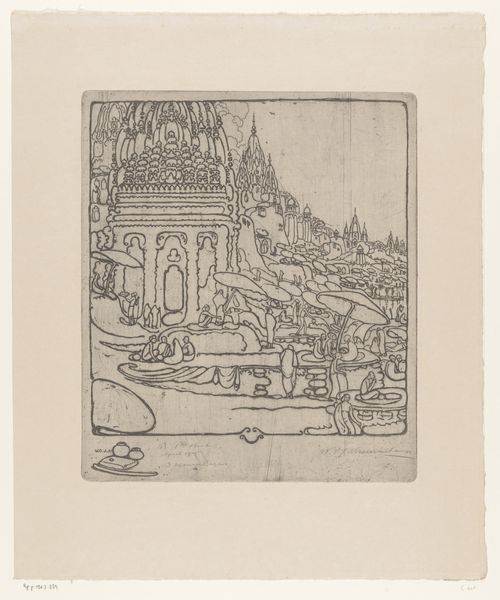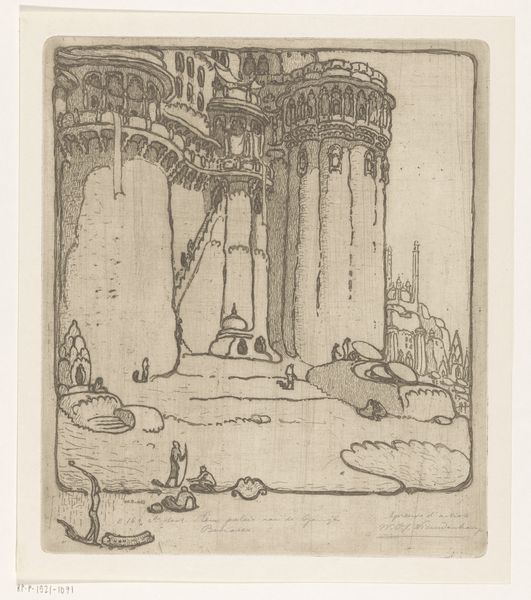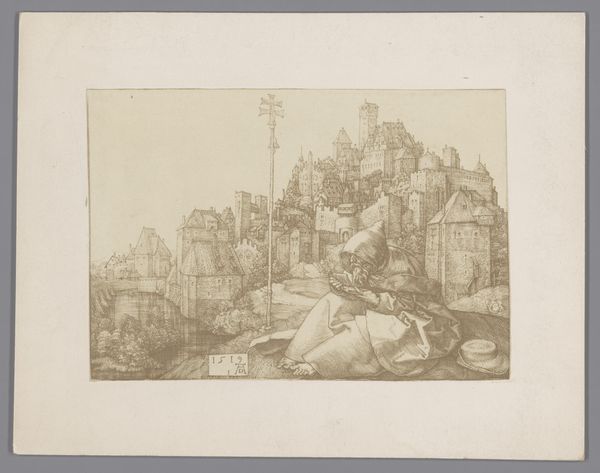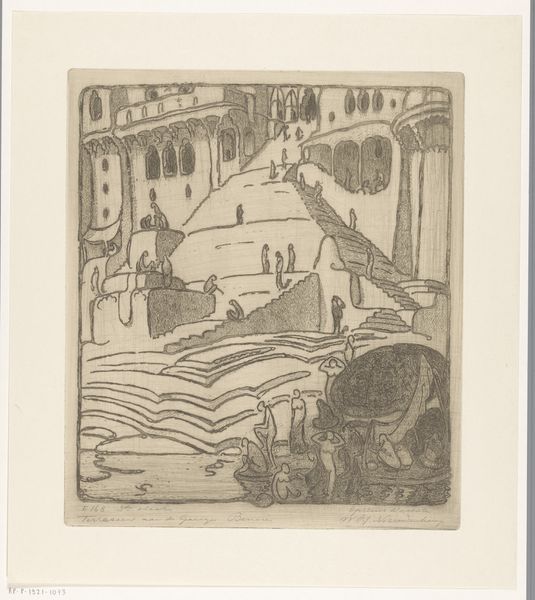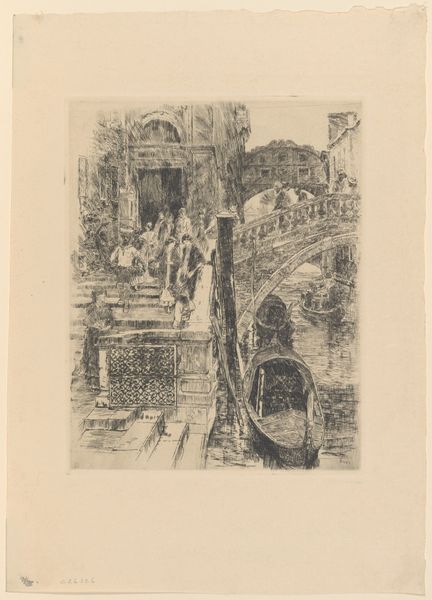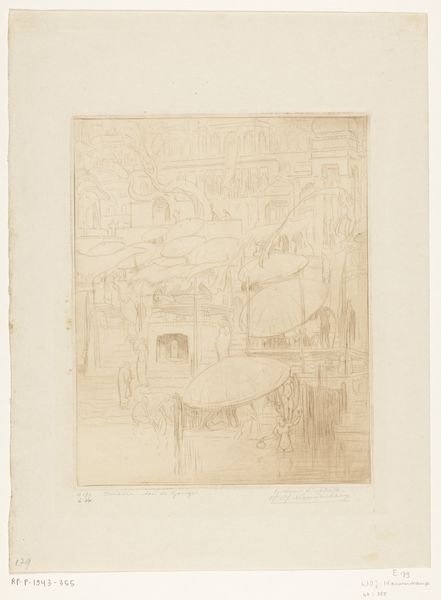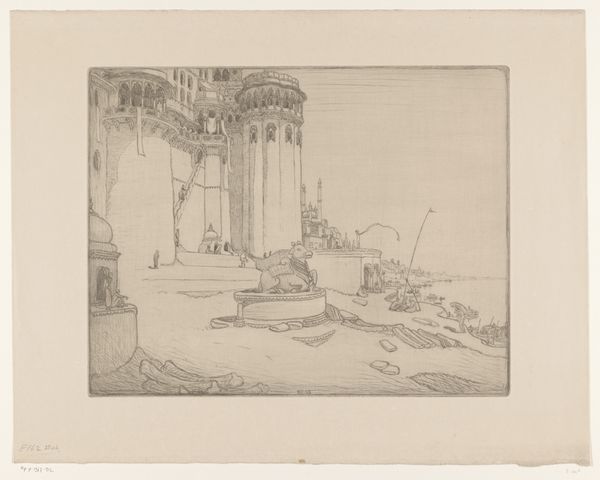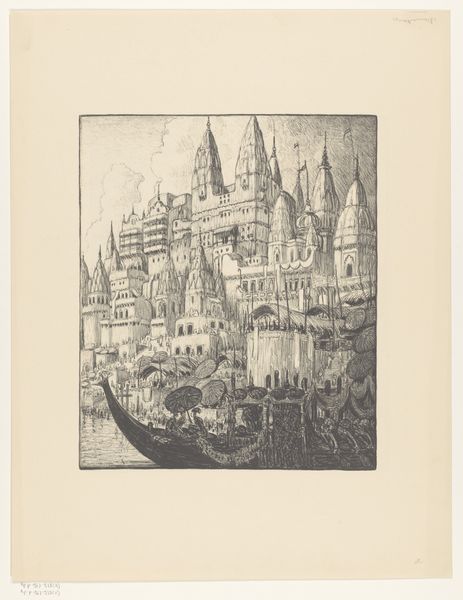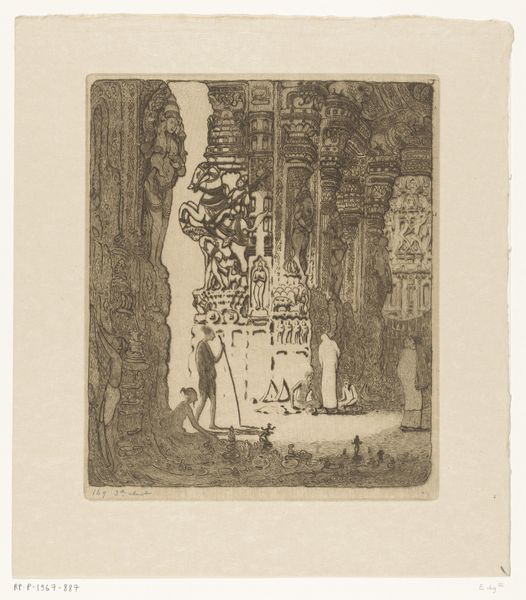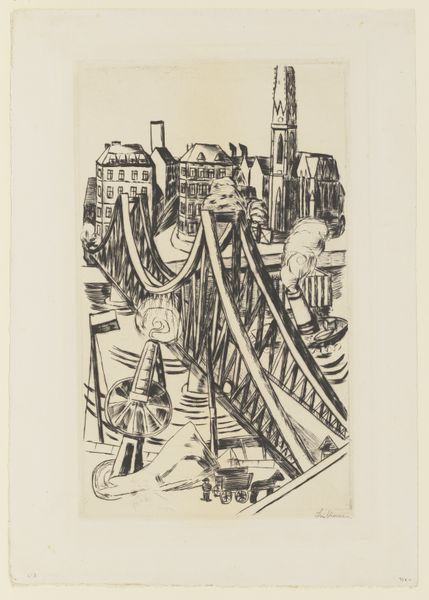
drawing, print, ink, engraving
#
drawing
# print
#
pen illustration
#
asian-art
#
landscape
#
figuration
#
ink
#
orientalism
#
cityscape
#
engraving
Dimensions: height 368 mm, width 317 mm
Copyright: Rijks Museum: Open Domain
Curator: This is Wijnand Otto Jan Nieuwenkamp's "A Temple on the Ganges, Benares," created around 1915, using ink and engraving techniques. It depicts a temple complex along the river. Editor: My initial impression is one of bustling, layered activity, but also a certain… still coolness. The parasols dotting the scene create almost a rhythmic visual pattern against the rigid architecture. Curator: Precisely. Nieuwenkamp, heavily influenced by orientalism, often used detailed cityscapes like this to explore spiritual and cultural concepts. The Ganges itself is not just a river here, but a sacred space of purification and passage. Look how the figures are arranged; in active dialogue, reflective solitude. Editor: I'm drawn to the printmaking process itself. The intricacy he achieves with line and the density of the ink… you can feel the artist's labor. Consider the economics of producing a print like this – who was its intended audience? It speaks to a Western fascination with exotic locales, packaged for consumption. Curator: Absolutely, and we can also think about this "exotic locale" through the perspective of sacred architectural space and memory. Temples possess the capacity to connect observers to narratives from the past, reminding those who see them of culturally and religiously vital narratives. In the foreground is the Ganges, in the background we glimpse more holy structures; Benares is saturated with multiple overlapping cultural symbols and referents. Editor: Right, but I wonder, doesn't this remove agency from the people *in* Benares at the time? What about their local economy and traditions being flattened into an exotic symbol, produced by Western artists? Where is their labor shown? I understand what you mean about these being potent symbols. Curator: I understand your concern about agency in relation to these communities that Nieuwenkamp depicts. And still, the artistic creation offers insight into a particular interpretation of culture, space and experience through the symbols present. Editor: I see that. It really prompts questions about artistic intention and the power dynamics inherent in representation. So much encoded information in one small print. Curator: Exactly. "A Temple on the Ganges, Benares" presents a complex interweaving of devotion, the labor involved in creating a visual experience, and representation itself. Editor: A powerful reminder of how art can both reveal and conceal.
Comments
No comments
Be the first to comment and join the conversation on the ultimate creative platform.
